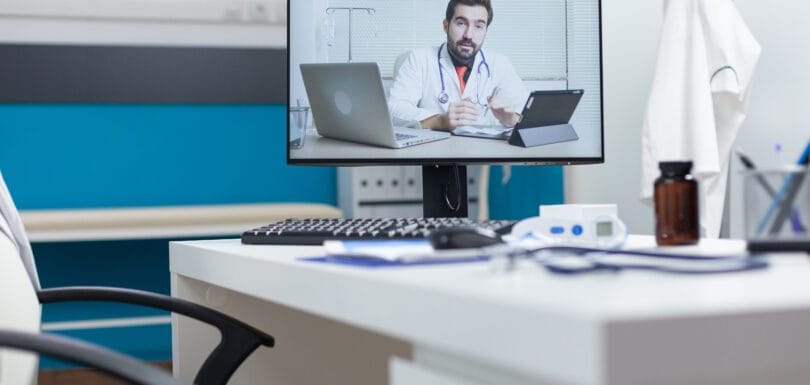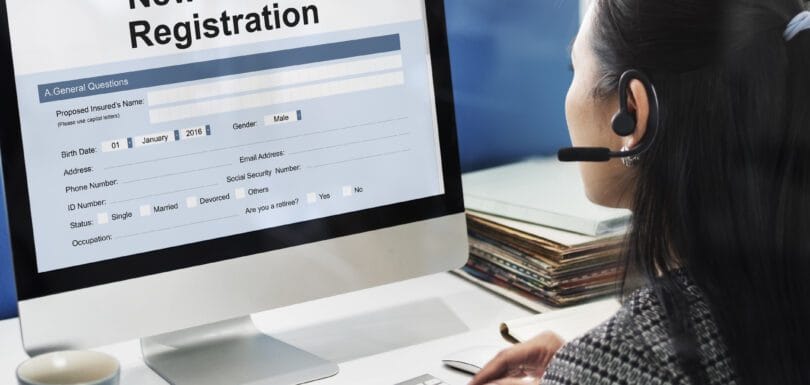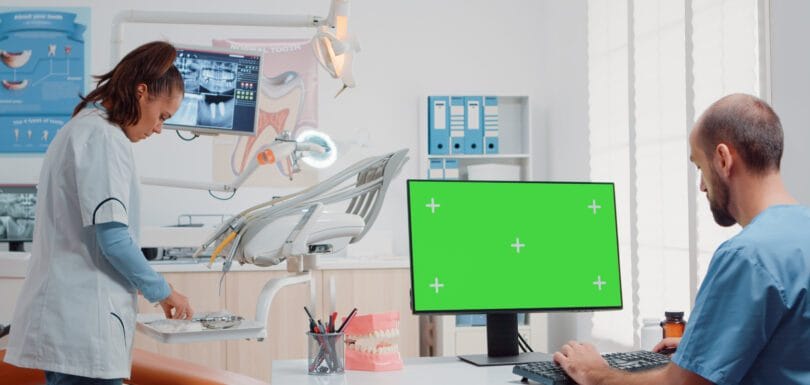9 Astonishing Shifts That Will Redefine Virtual Front Desk
Voice AI and Virtual Front Desk: Future Trends The healthcare world is rapidly changing, and so are the ways patients and providers connect. One of the biggest transformations is the rise of the Virtual Front Desk with Voice AI. This technology isn’t just a fancy upgrade it’s a total game changer. From streamlining check-ins to answering routine questions instantly, it’s quietly reshaping how medical offices interact with their patients every day. Instead of waiting on hold or juggling endless paperwork, patients now get to experience a smoother, more intuitive journey with voice-enabled virtual assistants doing the heavy lifting behind the scenes. It’s like having a smart, calm, and always-available receptionist at your service 24/7. In fact, many clinics are already seeing the benefits by adding support like a Virtual Medical Receptionist to handle routine calls and scheduling with incredible accuracy. In this blog, we’ll explore 9 astonishing shifts that are set to redefine virtual front desks. From automation to multilingual support and stronger data security, these future trends are paving the way for more personalized care and smarter clinic operations. 1: Voice AI Integration for Seamless Communication Voice AI is the heart of many virtual front desk systems today. It uses voice recognition and natural language processing to understand patient requests in a conversational way. This means patients no longer have to navigate complicated phone menus or wait for a staff member to be free. Instead, they can simply speak to the system to schedule appointments, ask for directions, or get answers about office hours. Many healthcare facilities are adopting voice-enabled virtual front desks to provide this seamless communication. For example, a patient can say, “I want to book a checkup next week,” and the AI instantly handles the request, confirming available slots. This technology reduces wait times, increases patient satisfaction, and frees up staff to focus on more complex tasks. Thanks to this integration, healthcare providers are improving accessibility while ensuring every interaction is smooth and human-like. 2: Automation of Administrative Tasks One of the most helpful features of the virtual front desk is how it automates everyday administrative work. Tasks like appointment reminders, scheduling, and patient check-ins that once required manual input are now streamlined by AI. A virtual medical office assistant powered by AI can handle multiple patient requests simultaneously, reducing errors and speeding up processing times. Moreover, a healthcare virtual assistant can send timely reminders to patients via calls or texts, reducing no-shows and improving office efficiency. This automation frees medical staff from repetitive tasks, allowing them to focus more on patient care. It also improves accuracy, since machines don’t get tired or forget important details. Key benefits of AI-powered automation include: Handling multiple patient requests at once without errors Sending timely appointment reminders via calls or texts Reducing patient no-shows and last-minute cancellations Speeding up scheduling and check-in processes Freeing up staff to focus on more complex patient care Increasing overall office productivity and reducing operational costs In short, automation with AI is helping medical offices save time, reduce costs, and increase overall productivity. 3: Personalization Through AI-Driven Insights AI doesn’t just perform routine tasks; it can also analyze patient data to provide personalized experiences. An AI virtual assistant in healthcare can learn from patient interactions and medical history to offer tailored suggestions. For example, it can remind patients about upcoming vaccinations or recommend follow-up appointments based on previous visits. These virtual assistant services make patients feel more cared for and understood. Personalization increases engagement because patients receive relevant information when they need it. For healthcare providers, this means building stronger patient relationships and improving health outcomes through better communication. By using data-driven insights, virtual front desks become more than just a receptionist they become proactive healthcare partners. 4: Enhanced Multilingual Support The diversity of patient populations is growing, and virtual front desks must keep up. AI systems today are becoming capable of supporting multiple languages, breaking down communication barriers. A virtual assistant for healthcare can now converse fluently in languages beyond English, ensuring that non-native speakers receive accurate and clear assistance. This shift towards healthcare virtual assistant companies focusing on multilingual support makes healthcare offices more welcoming and inclusive. Patients who might have previously struggled to understand instructions or make appointments in a foreign language can now get help easily in their native tongue. Multilingual AI increases access to care, improves patient satisfaction, and reduces misunderstandings that could affect health. 5: Integration with Electronic Medical Records (EMRs) Connecting voice AI systems with Electronic Medical Records (EMRs) is changing the way medical data flows. A virtual medical administrative assistant can access and update patient records instantly during interactions. This integration means doctors and staff always have the latest information without extra paperwork. Many virtual medical assistant companies now offer solutions that sync voice commands with EMRs, enabling quick documentation of visits, medication updates, and test results. This reduces the risk of errors and speeds up administrative workflows. Patients benefit because their care is coordinated better, and healthcare providers save time on manual record keeping. 6: AI-Powered Virtual Front Desks for Telehealth Telehealth is booming, and virtual front desks are playing a critical role in supporting remote care. A virtual assistant for doctors can manage telehealth appointments, help with patient triage, and provide real-time assistance during virtual visits. These virtual assistant services for medical practice ensure that telehealth sessions run smoothly from start to finish. By automating tasks like patient check-in and follow-up scheduling, AI-powered front desks reduce wait times and improve the overall telehealth experience. Patients appreciate the ease of use, and providers can focus on delivering quality care without administrative distractions. This trend is reshaping remote healthcare and making virtual visits as effective as in-person ones. 7: Data Security and Compliance Enhancements With the rise of AI in healthcare, protecting patient data is more important than ever. Healthcare virtual assistant companies are investing heavily in security features to keep information safe and comply with regulations like HIPAA. A virtual assistant for healthcare must











